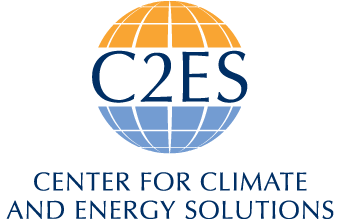Engineered Carbon Removal Working Group
Engineered carbon removal (ECR) is crucial to achieving deep decarbonization by midcentury. It is a necessary complement to rapid emissions reductions and the transition to clean energy. The ECR working group convenes companies across the ECR value chain, including innovative engineered carbon removal startups, companies, and financiers. This working group is focused on direct air capture (DAC) and biomass with carbon removal and storage (BiCRS) solutions.
There is broad consensus that both urgent greenhouse gas emissions reductions as well as gigatons of carbon dioxide removal (CDR) will be needed to limit the rise in average global temperatures to below 2 degrees Celsius above preindustrial levels. In addition to the widespread deployment of nature-based removal solutions, new forms of engineered carbon removal (ECR) will also be necessary.
In the last several years, there has been rapid growth in public and private investment in ECR technologies, including direct air capture (DAC), biomass with carbon dioxide removal (BiCRS), enhanced rock weathering, and marine carbon dioxide removal (mCDR). Today, the rate of carbon being removed from the atmosphere through ECR is about four orders of magnitude lower than needed to meet climate goals, as most techniques are still in the pilot or demonstration phase of technological readiness.
A great deal of technological innovation, policy development, and private and public investment in carbon removal technologies has occurred over the past decade. However, to achieve the necessary 10,000-fold increase in annual ECR in the next 25–30 years, this momentum will need to grow exponentially.
- Create a venue for ECR companies, corporate buyers, financiers, supporting infrastructure developers, and other key stakeholders to learn from each other and collaborate on the solutions needed to address the challenges laid out above.
- Build a shared knowledge base of the key market dynamics impacting the ECR industry, including the solutions needed to overcome barriers related to first-of-a-kind project financing and market demand.
- Align, to the extent practicable, on a shared set of policy priorities to enable market growth and collectively work towards the enactment of those policies.
- Strengthen connectivity and collaboration across the innovation ecosystem.
The Engineered Carbon Removal Ecosystem

The engineered carbon removal ecosystem: includes key components of the supply chain as well as important ecosystem forces. The operational supply chain excludes a “biomass feedstock” input into BiCRS because this working group is focused on shared infrastructure/resources between DAC and BiCRS. The ecosystem forces include key local, market, and government factors that will influence the long-term success of the ECR industry.
More than Carbon: The Value Proposition of Engineered Carbon Removal
This factsheet reviews several types of engineered carbon removals, and each technology’s decarbonization potential. It also outlines the co-benefits of ECR, including job creation, investment opportunities, ecological protection, and improved air quality, among others.
Read the Factsheet
Engineered Carbon Removal: Markets and Finance Federal Policy Recommendations
There is broad consensus that both aggressive greenhouse gas emissions reductions and gigatons of carbon dioxide removal (CDR) will be needed to limit the rise in average global temperatures to below 2 degrees C above preindustrial levels. In addition to widespread deployment of nature-based CDR solutions like reforestation and agricultural soil management, new forms of engineered carbon removal (ECR) will also be necessary. ECR offers several advantages, such as larger removal and scalability potential, greater durability, and more locational flexibility. This brief offers five policy recommendations focused on addressing the financial and market barriers to scaling this critical-path technology.
Read Publication
Recommendations from C2ES’s Engineered Carbon Removal Working Group
C2ES Carbon Management Senior Fellow and Technology Innovation Policy Associate Fellow reflect on the first year of the Engineered Carbon Removal (ECR) Technology Working Group and newly-released policy recommendations to scale ECR technologies in the U.S.
Read Blog
C2ES Comments on the Notice of Intent Regarding the DOE Voluntary Carbon Dioxide Removal Purchasing Challenge
Explore our comments in support of the Department of Energy’s CO2 Removal Purchasing Challenge.
Read Publication
The Power of Procurement: Scaling the carbon dioxide removal market
This blog reviews how the CO2 Removal Purchasing Challenge leverages the CDR Purchase Pilot Prize, a key federal carbon dioxide removal (CDR) procurement initiative, and summarizes our comments on the CO2 RP Challenge’s Notice of Intent.
Read Blog

